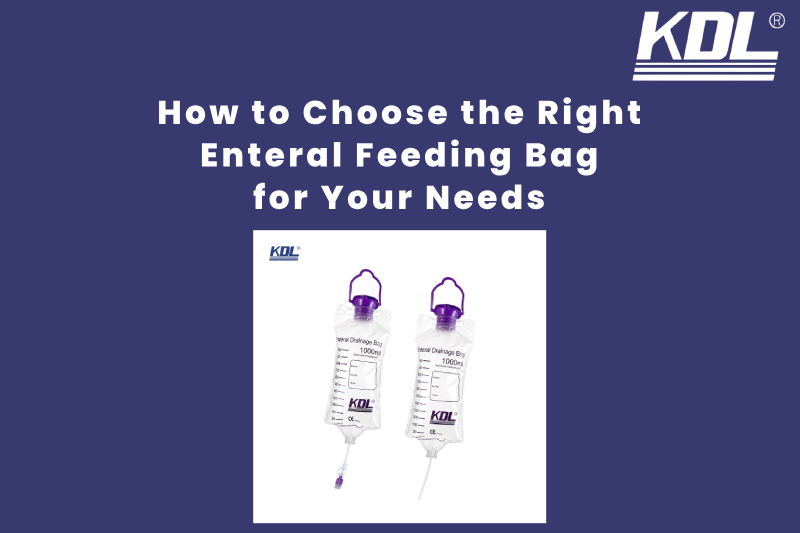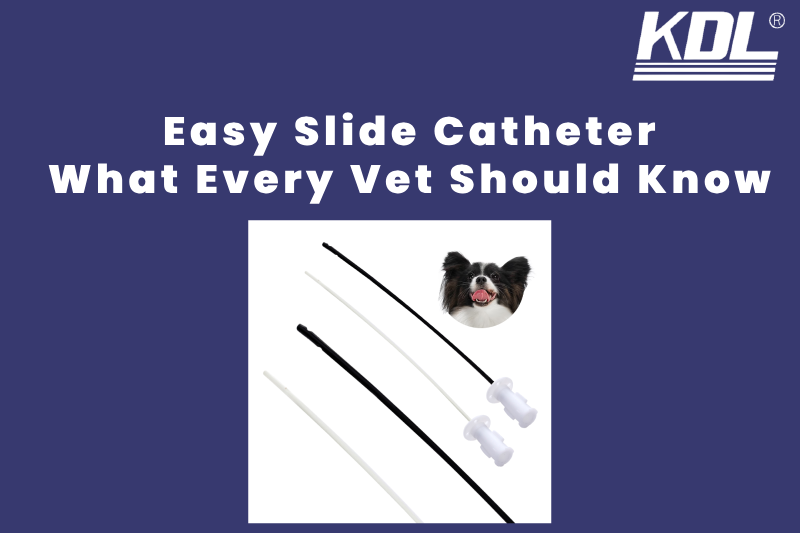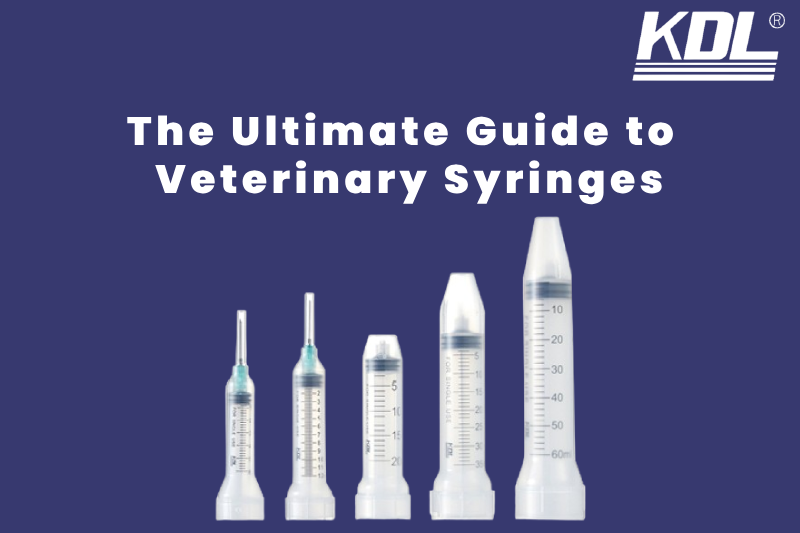
Choosing the right enteral feeding bag is a critical decision for anyone who needs enteral nutrition. Whether for a short-term medical condition or long-term feeding support, selecting a high-quality, compatible feeding bag can greatly affect the patient’s comfort, safety, and feeding efficiency. This comprehensive guide will walk you through the factors that matter most when selecting the right enteral feeding bag for your specific needs.
What Are Enteral Feeding Bags?
Enteral feeding bags are medical devices use to deliver liquid nutrition directly to the gastrointestinal tract. This method is often necessary when patients are unable to eat or drink by mouth due to conditions like swallowing difficulties, severe illness, or recovery after surgery. The feeding bags hold liquid formulas, medications, or other necessary nutrients and transport them via a feeding tube into the stomach or intestines. These bags come in different sizes and capacities, including 800ml and 1000ml options, to suit varying nutritional needs. For instance, if you need a reliable 800ml or 1000ml enteral feeding bag, you can check out these 800ml Enteral Feeding Bags and 1000ml Enteral Feeding Bags from KDL.
Key Types of Enteral Feeding Bags
- Gravity-fed feeding bags: These rely on gravity to allow the liquid to flow through the tube into the body. They are usually less expensive and simpler to use, making them ideal for home care settings.
- Pump-fed feeding bags: These bags work in conjunction with a pump that controls the flow of the liquid formula. They provide more precise control and hospitals often prefer them in settings where staff must carefully regulate the patient’s feeding schedule.
Why Choosing the Right Enteral Feeding Bag Matters
Choosing the correct feeding bag has a significant impact on the patient’s overall experience. Therefore, a wrong choice could lead to discomfort, feeding complications, and inefficient nutrient delivery. Here’s why making the right selection is so crucial:
- Patient comfort: The bag should allow for smooth feeding without excessive irritation, discomfort, or leaks. A poorly fitting or difficult-to-use feeding bag can lead to emotional and physical distress.
- Feeding efficiency: The right bag ensures that it delivers the proper amount of nutrition at the correct rate. An inefficient system may result in inadequate nutrition or wastage of liquid formula.
- Safety: Leaks, blockages, and malfunctions can be dangerous, leading to spills, contamination, or incorrect feeding volumes. Ensuring that the bag is reliable and safe reduces risks for the patient.
Key Factors to Consider When Choosing an Enteral Feeding Bag
When you’re shopping for an enteral feeding bag, there are several key features and considerations to keep in mind. These features impact both the bag’s effectiveness and your overall experience with it.
1. Capacity Options: What Size Should You Choose?
The size of the enteral feeding bag is one of the first decisions you’ll need to make. The capacity of the bag determines how much nutrition it can hold and how often you will need to refill it.
- Common sizes: Enteral feeding bags generally come in capacities ranging from 500 ml to 1500 ml. The most common sizes are:
- 500 ml: For patients who require smaller, more frequent feedings.
- 1000 ml: A common middle ground for those with average nutritional needs.
- 1500 ml: Used for patients who need larger volumes of feeding in one session.
When deciding on the bag size, consider:
- Feeding schedule: How often the patient needs to eat. If feedings are frequent, a smaller bag may be more convenient. For longer feeding sessions, a larger capacity bag might be necessary.
- Volume of nutrition required: Consult a healthcare professional to estimate how much nutrition you need per feeding session.
2. Material Quality: What’s the Best Material for Safety and Durability?
Enteral feeding bags come in a variety of materials. The quality of the material directly affects the safety and durability of the bag.
- BPA-free plastics: Ensure that the manufacturer makes the feeding bag from BPA-free materials. Make sure to use a feeding bag made of BPA-free materials. BPA (bisphenol A) is a chemical found in some plastics that researchers have linked to potential health risks. Most medical-grade feeding bags today are BPA-free to ensure safety.
- Durability: Look for bags made from durable, puncture-resistant plastic to avoid leaks. Transparent bags allow caregivers to visually inspect the amount of liquid remaining and ensure proper mixing of nutrients. People sometimes use opaque bags to block light and prevent degradation of light-sensitive nutrients.
- Non-toxic and medical-grade materials: Always choose bags that materials approved for medical use make. In addition these bags should not leach chemicals into the food, nor should they be harmful when in contact with the body.
3. Ease of Use: Which Features Make a Bag More User-Friendly?
Feeding should be as easy and stress-free as possible, both for the patient and the caregiver. Look for these user-friendly features to simplify the process:
- Leak-proof connectors: A secure, leak-proof connector reduces the risk of spills during feedings.
- Measurement markings: Bags with clear measurement lines allow caregivers to easily monitor the amount of liquid in the bag. This is especially useful, particularly when it’s important to track nutrition intake.
- Anti-reflux valves: Some bags come with anti-reflux valves that prevent liquid from flowing backward, reducing the risk of aspiration or discomfort for the patient.
- Flexible tubing: Flexible and durable tubing makes it easier to position the feeding bag and manage the feeding process without kinks or blockages.
These features ensure a smooth, hassle-free feeding experience and reduce the potential for accidents or complications.
4. Compatibility: Is the Feeding Bag Compatible with Your Feeding System?
It’s essential to choose an enteral feeding bag that is compatible with the type of feeding system you are using; specifically, whether it’s a pump or, alternatively, a gravity-fed system.
- Feeding pump compatibility: Some enteral feeding bags are design specifically for use with feeding pumps, which regulate the flow rate of liquid. If you’re using a pump, make sure the bag is compatible with your system.
- Connector size and type: The connectors on the bag should match the connectors on the feeding tube or pump. Some manufacturers provide enteral feeding bags with universal connectors, while others design them for specific systems.
- Tube compatibility: Be sure the bag is compatible with the specific type of feeding tube the patient uses. For example, some bags suit gastrostomy tubes better, while others may work better with nasogastric tubes.
Tips for Maintenance and Safe Use
Proper maintenance is essential to extend the life of the feeding bag and avoid health risks:
- Clean and disinfect the bag thoroughly after each use to avoid bacterial contamination. Follow the manufacturer’s instructions for cleaning and sterilization.
- Replace feeding bags regularly: Depending on use, you should replace the bag every 24 to 48 hours to prevent the growth of bacteria.
- Inspect the bag: Before each use, check the bag for any signs of wear, such as tears or cracks; consequently, these could lead to leaks or contamination.
- Store bags correctly: Keep unused bags in a dry, cool place away from direct sunlight. This helps maintain the quality and safety of the bags.
Why Choose KDL Enteral Feeding Bags?
When it comes to feeding bag, KDL is a trusted manufacturer and supplier of high-quality enteral feeding bags. Our products are designe to deliver optimal performance, ensuring comfort and safety for patients. With advanced features and reliable construction, KDL’s 800ml Enteral Feeding Bag and 1000ml Enteral Feeding Bag stand out as excellent choices.
What Makes KDL Enteral Feeding Bags Unique?
- Durable Materials: KDL’s bags are made with medical-grade, BPA-free materials that are safe and long-lasting.
- Leak-Proof Design: Every KDL enteral feeding bag is equipped with secure connectors to prevent spills or leaks.
- User-Friendly Features: Clear measurement markings and anti-reflux valves make feeding easier and more efficient.
- Custom Capacities: Choose between the 800ml Enteral Feeding Bag for moderate nutritional needs or the 1000ml Enteral Feeding Bag for higher feeding requirements.
Conclusion
Choosing the right enteral feeding bag involves understanding your specific feeding needs, evaluating different bag options, and ensuring that the bag is compatible with your feeding system. When selecting the perfect feeding bag for your situation, it is important toBy considering factors such as capacity, material quality, ease of use, and compatibility, you can ultimately select the perfect feeding bag for your situation. Furthermore, it is important to evaluate each factor thoroughly to ensure that you make the best choice. consider factors such as capacity, material quality, ease of use, and compatibility. Always consult with a healthcare professional to make sure your choice aligns with the patient’s medical needs and feeding schedule.
 +86-791-8686-1216
+86-791-8686-1216 










